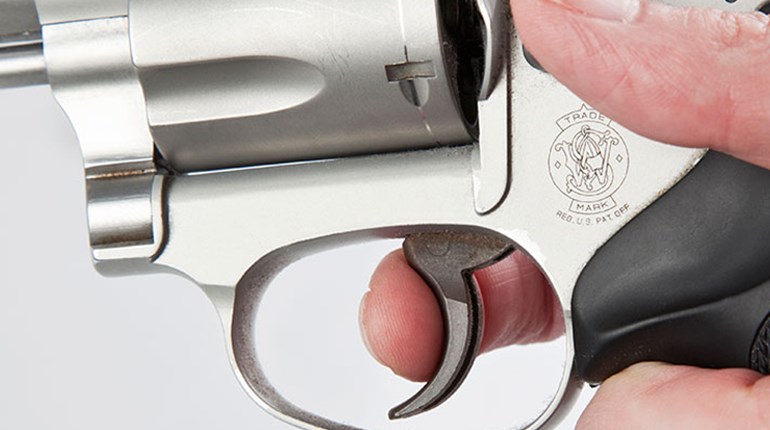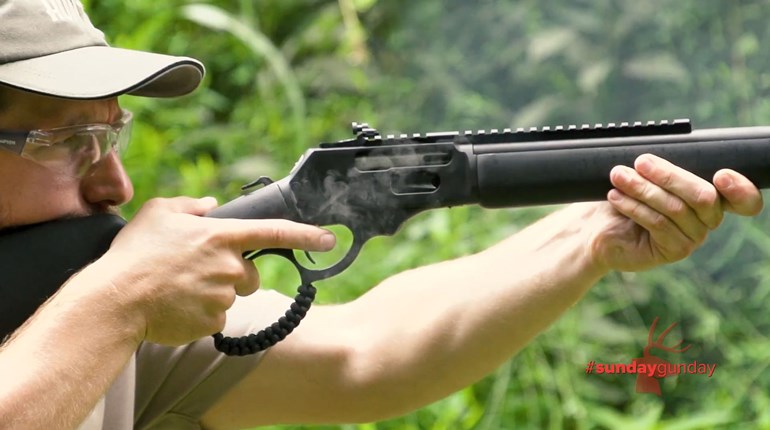
In our last discussion about handguns doing the unexpected, we discussed what some call the "loudest sound you'll ever hear," the dreaded "CLICK" when you're expecting a "BANG." But what about when your handgun goes "...bang...sort of?" When something didn't quite sound, or feel, right? If you hear a lighter-than-normal "bang," and/or feel lighter-than-normal recoil, it's possible that a "squib load" may have entered your ammo supply.
Though it's extremely rare, a squib load/round is one whose propelling energy is less than necessary to push the projectile out of the firearm. This results in your handgun bullet being lodged somewhere between the chamber and the muzzle-a condition that could cause you major problems if you keep shooting. That's because firing another round behind the squib might result in that following round- and the gases propelling it-getting stuck behind the lodged bullet. Consequences range from a mortally damaged handgun to a very seriously injured shooter.
While squibs are usually attributed to faulty powder charges, which in turn are attributed to careless reloaders, they can happen with any ammunition. I've seen high-quality factory ammo yield a squib or two. Still, squib rounds are rare, and in my career-having seen hundreds of thousands of rounds fired-I've witnessed five among handgun loads (three were reloads, two were factory ammo).
To safely and properly "fix" a squib load situation, first pay attention when you're shooting! As soon as you noticed any difference in the sound or feel of a shot, stop. Unload the firearm. Then disassemble it, if possible, and examine the barrel by looking through it (for a revolver, drop a weighted string through the forcing cone and see if it comes through the muzzle). If there's an obstruction, take a properly sized wooden dowel (it should be close to the diameter of the bore, but should move freely in the barrel), and place it through the muzzle or chamber end to determine where the stuck projectile is located in the bore. Then, take the dowel through the end of the barrel that's furthest from the projectile, and gently tap the bullet out from the closest end of the barrel to it.
Even rarer, but potentially more dangerous if proper safety rules aren't observed, is the "hangfire." A hangfire is defined as a delay in the detonation of the propellant (gunpowder), which in turn results in a delay in the firing of the cartridge. The delay can be as long as seconds, but is often almost undetectable. It's evidenced by a "click," instead of a bang, but can also occur when you hear a much-lighter-than-normal sound upon on the firing of your handgun. Like squib loads, hangfires are often blamed on sloppy reloading habits, but can occur amongst any type of ammunition, including factory manufactured rounds.
The safest way to get past a hangfire is to keep your muzzle pointed on target (safe direction), wait for several seconds, and execute your "tap-rack-roll" move. How long do you wait? Opinions vary widely, and I've heard everything from five to 60 seconds prescribed. Then, there are those who insist that you should not wait, and should go ahead and conduct the "tap-rack-roll" action to clear the bad round and chamber a new one. The latter group (to which I belong) generally bases this advice on the ideas that:
A) If training for self-defense, waiting to reload the chamber could be far more dangerous than extracting the bad round, even if it detonates.
B) If the cartridge does eventually "go off," but is outside the firearm, the chances of injury are minimal.
C) If the round is a hangfire, it's impossible to know when it will detonate-or how long to wait. And, see item B).
Regardless of how long you wait to clear the cartridge, following the Four Safety Rules in combination with your chosen method will keep you safe. Likewise, paying attention to what you're sensing when shooting will help you identify a squib situation. Just keep in mind that firearms, and ammunition, are man-made, mechanical products, and rare as it is, they can malfunction. The good news is, once you understand the malfunctions, you'll see that you have the power to manage many of them, and above all, to stay safe while doing so.







































